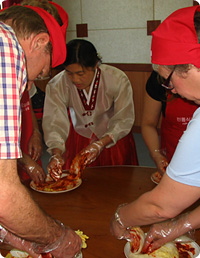CULTURAL
Temple Life / 8 hours
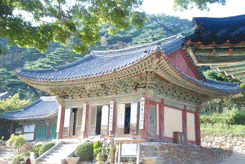
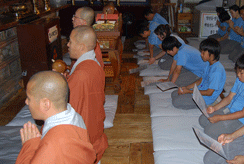
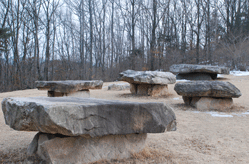
Tour Highlights
- Temple Life Experience
- Ganghwa History Museum
- Ganghwa Dolmen
Seoul - Ganghwado - Seoul (- - -) 140km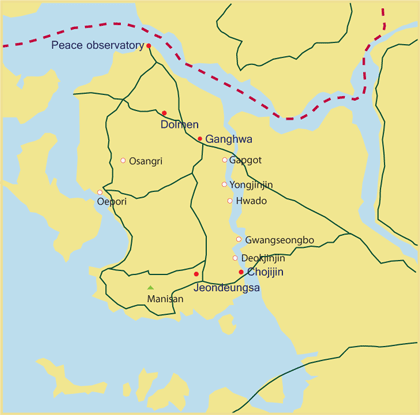
* The tour is subject to operate with minimum 10 people.
Today, you will experience a traditional monastic life at Jeondeungsa, active Buddhist temple dating back to 381 providing a glimpse into Buddhist culture. The temple came into prominence during the late Goryeo period (918-1392) when King Gojong commissioned the famous Tripitaka Koreana wood blocks to be carved there which are now preserved in Haeinsa temple. The main worship hall is dedicated to Sakyamuni Buddha. The Buddha is flanked on the left by Manjusri, the Bodhisattva of Perfect Wisdom, and on the right by Samantabhadra, the Bodhisattva of Perfect Compassionate Action. As you approach the hall, look carefully way up in the eaves at the corners of the roof, and there you can just see tiny human figures, one at each corner. One version says that the forsaken carpenter carved his two-timing girl up in the rafters, eternally bearing the burden of her deceitfulness. You will see a dharma bell dating back to 1097, the only Chinese bell designated a Korean treasure.
There are many temples in Korea, but the opportunity to observe and experience the ascetic Buddhist life in a temple does not come easily to outsider visitors. Some of the temples in Korea open their doors to foreign visitors for a short sojourn to give visitors the opportunity to see how monks practice their daily discipline from early morning prayers to evening rites. The temples are places where Buddha dwells and where the disciples of Buddha, or monks, practice asceticism. It is also a place where believers learn Buddhist teachings and put them into practice. Visitors will get to study and experience the Korean tradition and culture, all at the same time enjoying the nature.
Temple program may vary due to season and conditions of the individual temple situation, but it basically includes meditation, tea ceremony, lotus lantern making or prayer bead making. You will experience temple meal, perhaps first time in your life.
After temple program, explore Ganghwado, a fascinating place that is often called a microcosm of Korean history. But, due to its strategic location, Ganghwado has historically been one of the first targets of many foreign attacks particularly in the late 19th century when Korea unsuccessfully sought to maintain its status as a "Hermit Kingdom".
Ganghwa History Museum provides glimpse into the historical records of the entire spectrum of Korean existence, from the mythical foundation of Korea to the opening port to the outside World marked by Ganghwado Treaty signed in February 1876. On the nearby ground sits a huge Ganghwa Jiseokmyo Dolmen. This 53-ton capstone of 6.4 meters long, 5.2 meters wide and 1 meter thick rests on two sturdy supporting prop stones. This prehistoric dolmen including many others in Gochang and Hwasun has been registered by UNESCO in December 2002 as a World Heritage for their archaeological value.





